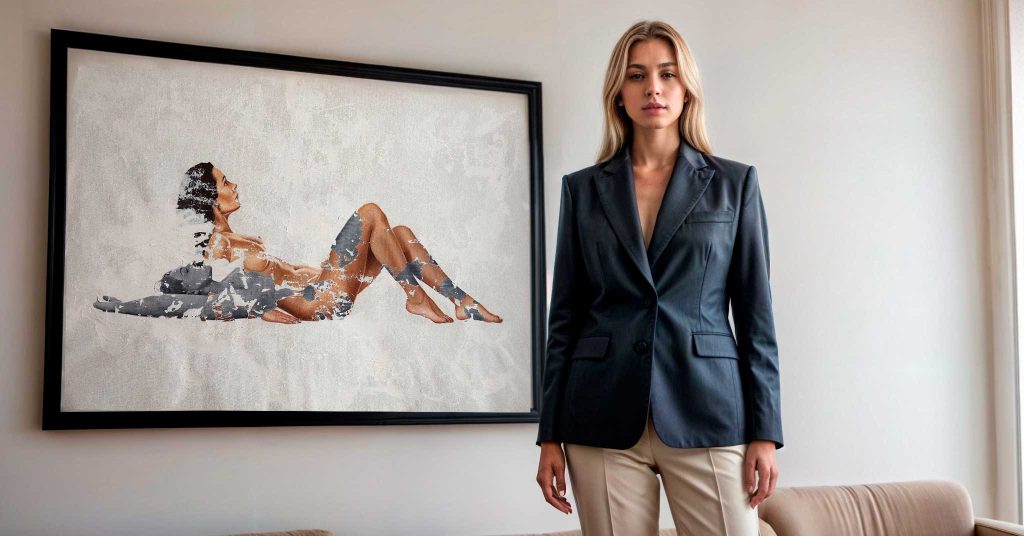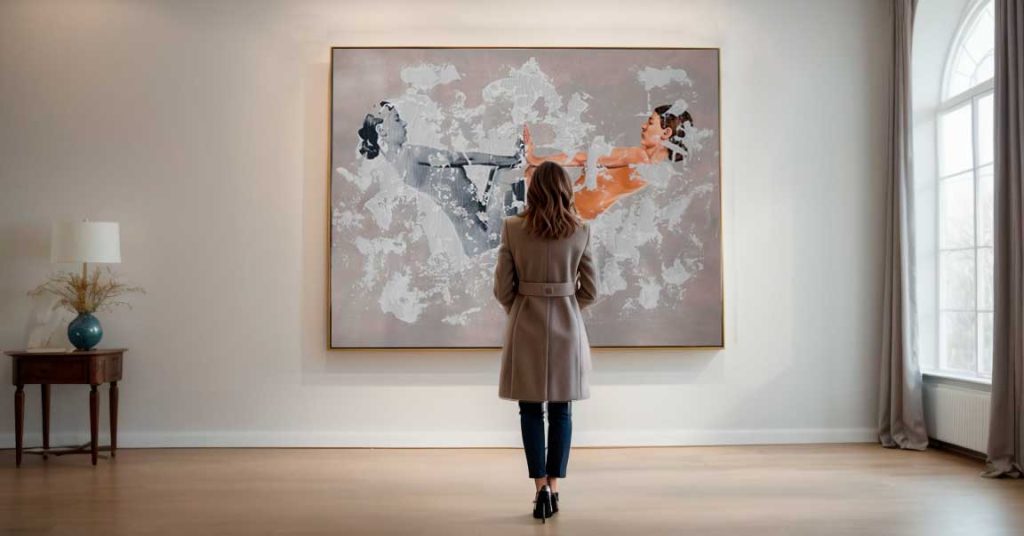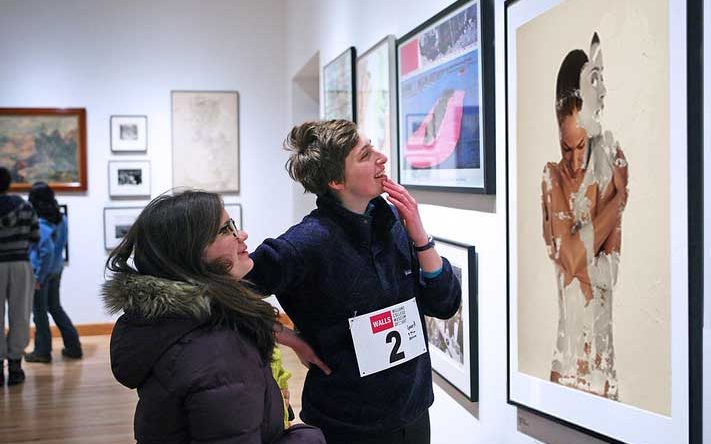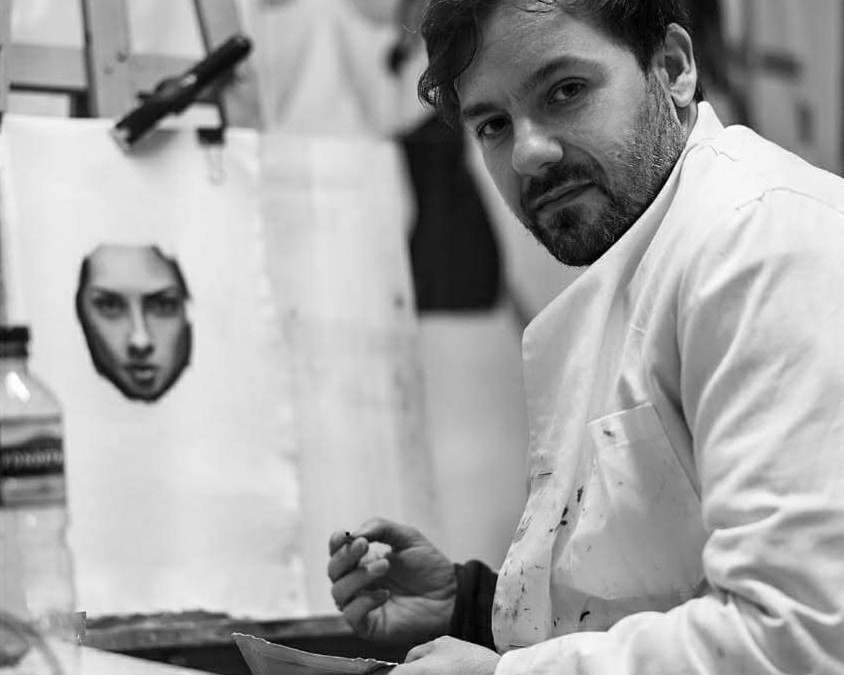
Introduction
Have you ever stood in a museum, surrounded by breathtaking artworks, yet felt a knot of anxiety tightening in your stomach? You’re not alone. Many people find themselves looking at art with a sense of intimidation, unsure how to “properly” appreciate these masterpieces. But what if I told you that there’s no secret code to unlocking the magic of art? It’s all about approaching it with curiosity, open-mindedness, and a willingness to engage.
This guide will equip you with the tools to confidently navigate the world of art. We’ll delve into the reasons behind that feeling of intimidation, then dismantle it brick by brick. By following these simple steps, you’ll transform looking at art from a daunting task into a rewarding and enriching experience.
Understanding Your Feelings


There are several reasons why people might feel intimidated by art. Perhaps it’s the perceived elitism associated with museums and galleries. Maybe the vast array of styles and techniques feels overwhelming. Or maybe you worry your lack of formal art education might hinder your ability to “get it.”
The good news is, these feelings are completely normal! Art appreciation is a lifelong journey, and everyone starts somewhere. Think of it like learning a new language – you wouldn’t expect to be fluent overnight. The key is to embrace the learning process and allow yourself to be curious.
How to Look at Art: Step-by-Step Guide


Now, let’s dive into the practical steps that will transform you from an intimidated observer into a confident art enthusiast.
Step 1: Approach with Curiosity
Imagine yourself embarking on an adventure, a treasure hunt where the artwork is the hidden gem. Ditch the pressure to understand everything perfectly. Instead, approach each piece with a sense of wonder. What draws you in first? Is it the vibrant colors, the intricate details, or the overall mood of the artwork?
Actively engage your senses. Take a step closer (if allowed) and examine the brushstrokes. Does the texture of the paint convey a sense of roughness or smoothness? How does the artist use light and shadow to create depth? Don’t be afraid to let your imagination take flight. What story do you think the artwork is trying to tell?
Step 2: Take Your Time
In our fast-paced world, slowing down can feel like a luxury. However, when it comes to looking at art, patience is key. Don’t rush through galleries, flitting from one masterpiece to the next. Instead, dedicate time to each piece that piques your interest.
Focus on the details. Examine the composition, the use of color, and the interplay of light and shadow. Notice how the artist uses specific elements to guide your eye throughout the artwork. This slow and deliberate observation allows you to truly appreciate the artist’s skill and vision.
Step 3: Trust Your Instincts
Forget the pressure to analyze every artwork like an art historian. The beauty of art lies in its ability to evoke emotions and personal connections. Don’t be afraid to trust your initial reactions. Does a particular painting make you feel joyful, pensive, or even a little unsettled? Those gut feelings are valid and can be a valuable starting point for deeper exploration.
Looking at art is a deeply personal experience. Your interpretation is just as valid as anyone else’s. Embrace your unique perspective and allow it to guide your journey through the art world.
Step 4: Ask Questions
Think of yourself as an art detective, piecing together clues left behind by the artist. Here are some questions to spark your curiosity:
- What is the subject matter of the artwork?
- What emotions does it evoke in me?
- What techniques did the artist use to create this piece?
- When and where was this artwork created?
- What was happening in the world at that time?
Asking questions helps you delve deeper into the artwork’s context and meaning. Don’t be shy! Many museums offer audio guides or even tours led by knowledgeable docents who can provide fascinating insights.
Step 5: Seek Context
Understanding the historical and cultural context of an artwork can significantly enhance your appreciation. Imagine viewing a painting depicting a religious scene from the Renaissance period. Knowing the religious beliefs and social norms of that time can shed light on the symbolism and meaning behind the artwork.
Many museums offer online resources, such as artist biographies and historical timelines, that can enrich your understanding. Art history books and documentaries are also excellent resources for expanding your knowledge base. The more you learn about art history and different artistic movements, the more confident you’ll feel when looking at art.
Overcoming Common Obstacles


Even with the best intentions, you might still encounter some roadblocks on your path to art appreciation. Here are some common obstacles and strategies to help you overcome them:
Obstacle 1: Fear of Judgement
Museums and galleries can sometimes feel like intimidating spaces filled with supposed art experts. But remember, everyone starts somewhere! Art appreciation is a journey, not a competition. There’s no right or wrong way to look at art.
Here’s a secret: most people in museums are just as curious and eager to learn as you are. Strike up a conversation with a fellow visitor, or ask a museum staff member a question about a piece that intrigues you. You might be surprised by the insightful discussions that arise from a shared appreciation for art.
Obstacle 2: Lack of Knowledge
Feeling like you lack the necessary knowledge to “understand” art is a common hurdle. But remember, art appreciation isn’t about memorizing historical facts or technical jargon. It’s about engaging with artworks on a personal level.
Here are some resources to build your art literacy without feeling overwhelmed:
- Online Resources: Many museums offer virtual tours and online collections with accompanying information about the artworks. Websites like the Metropolitan Museum of Art’s Heilbrunn Timeline of Art History provide a fantastic starting point for exploring different artistic movements.
- Podcasts and Documentaries: Engaging podcasts and documentaries can introduce you to art history and different art movements in a fun and accessible way.
- Art Books: Start with introductory books that provide a broad overview of art history. Look for visually engaging books with clear explanations.
The more you expose yourself to art and related resources, the more confident you’ll feel when looking at art.
Obstacle 3: Feeling Disconnected
Sometimes, you might stand before a piece of art and feel a sense of disconnect. Don’t be discouraged! Here are some ways to foster a personal connection:
- Empathy: Try to step into the artist’s shoes. What message were they trying to convey? What emotions or experiences might have inspired them to create this artwork?
- Imagination: Let your imagination run wild. What story do you think the artwork tells? Who are the characters in the scene? How would you feel if you were transported into the artwork?
By engaging your empathy and imagination, you can bridge the gap between yourself and the artwork, creating a more meaningful connection.
Conclusion
By following these steps and overcoming common obstacles, you’ll be well on your way to looking at art with confidence and a sense of wonder. Remember, art appreciation is a journey, not a destination. Embrace the learning process, be curious, and allow yourself to be surprised. The more you explore the world of art, the richer and more fulfilling your experience will become. So, the next time you find yourself in a museum or gallery, take a deep breath, approach the artwork with an open mind, and embark on your own artistic adventure!
Frequently Asked Questions (FAQs)
1. I’m worried I won’t “get it.” What if I don’t understand the meaning of an artwork?
There’s no one definitive meaning to many artworks. The beauty lies in your own interpretation! Focus on your initial reactions and emotions, and trust your gut feeling.
2. Do I need to be well-versed in art history to appreciate art?
Absolutely not! While a basic understanding of art history can be helpful, it’s certainly not a prerequisite. The most important thing is to approach art with curiosity and an open mind.
3. What if I don’t like a particular artwork?
That’s perfectly okay! Art is subjective, and what resonates with one person might not resonate with another. Don’t feel pressured to like everything you see.
4. Are there any “rules” for looking at art?
There are no hard and fast rules! The key is to be present, observe closely, and allow yourself to be moved by the artwork.
5. How can I continue learning about art after reading this article?
There are endless resources available! Explore online museum collections, listen to art podcasts, or take an introductory art history course. The more you learn and explore, the deeper your appreciation for art will become.
Related Articles


Disclaimer:
“Please note that I am not a expert in this field. I am an artist with a deep curiosity and a passion for learning. The topics I write about are ones that intrigue me, and I find researching and writing about them the best way to enhance my understanding and I hope that sharing these articles might be helpful or interesting to others as well.
Thank you for reading and I hope you liked it!”




